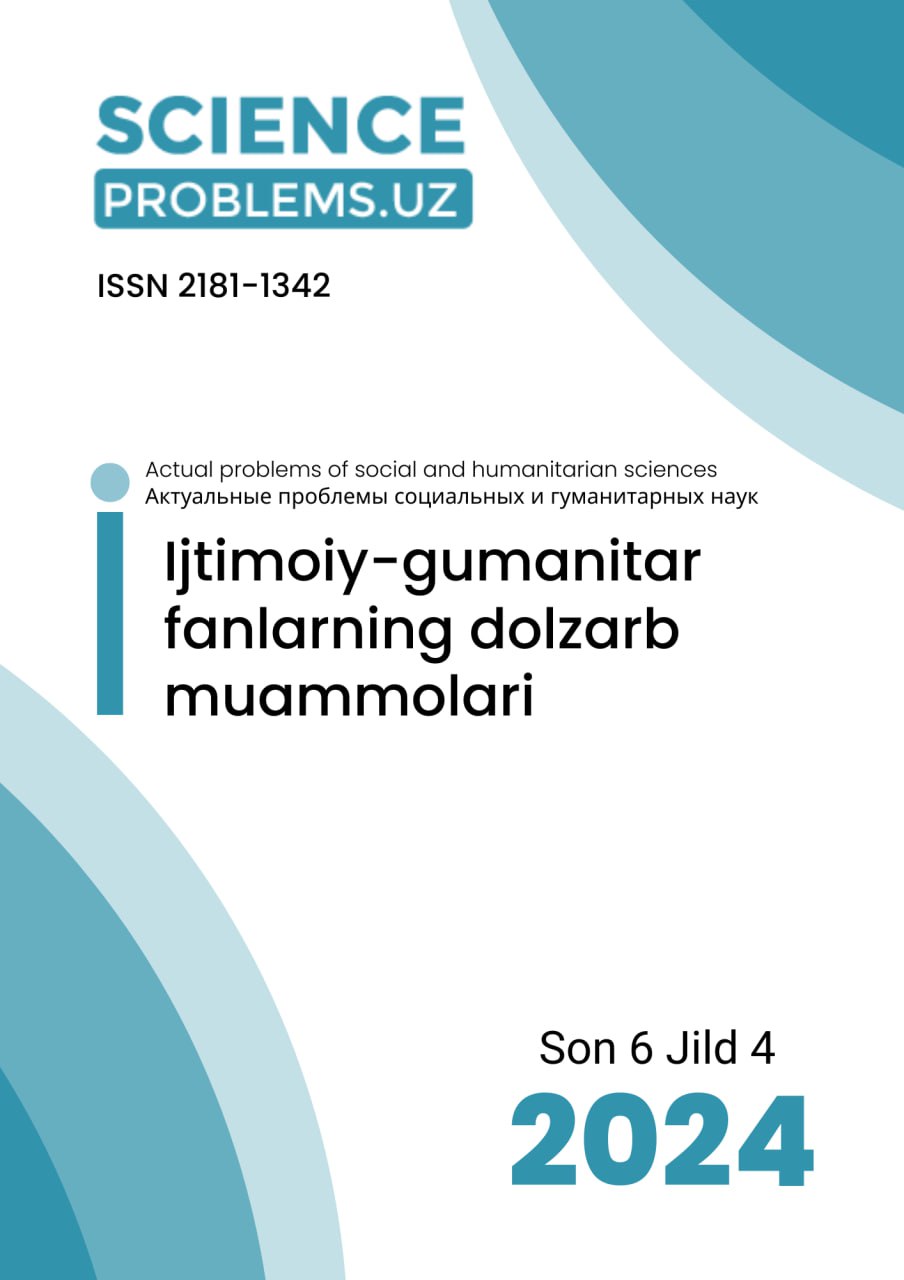THE ROLE OF CORPUS OF CONTEMPORARY AMERICAN ENGLISH (COCA) IN ENHANCING WRITING INSTRUCTION
Kalit so'zlar
https://doi.org/10.47390/SPR1342V4I6Y2024N102Kalit so'zlar
COCA corpus, lexical sophistication, writing instruction, EFL classes, collocability, KWIC.Annotasiya
The most challenging language skill for most EFL students is considered to be writing skill because of limitation of their vocabulary repertoire and their uncertainty regarding the use of more advanced vocabulary. This article explores experimental research on the applications of COCA in teaching writing, focusing on its role in enhancing vocabulary acquisition, improving grammatical accuracy, promoting genre-specific writing skills, and fostering overall writing proficiency.
Manbalar
Abdurakhmonova, N., Urdishev, K. (2019). Corpus based teaching Uzbek as a foreign language. Journal of Foreign Language Teaching and Applied Linguistics (J-FLTAL), 6(1-2019), 131-7.
Аtaboev N.B. (2020): Ingliz tili korpusining funktsional xususiyatlari (СОСА misolida): Аvtoreferat dis. … kand. ped. nauk / UzDJTU, T. – 2020
Boulton, A. (2009). Data-driven learning: Reasonable fears and rational reassurance. Indian Journal of Applied Linguistics, 35(1), 81-106.
Boulton, A., (2010). “Data-Driven Learning: Taking the Computer Out of the Equation,” Language Learning, vol. 60, no. 3, pp.534-572.
Chu, X. Q., & Liu, C. M. (2007). Self-access to advanced English vocabulary acquisition–Corpus-based approach. Media in Foreign Language Instruction, (5), 12-17.
Davies, M., (2010). “The Corpus of Contemporary American English as the First Reliable Monitor Corpus of English,” Literacy and Linguistic Computing, vol. 25, no. 4, pp. 447-464.
Dennen, V. P., (2004). “Cognitive Apprenticeship in Educational Practice: Research on Scaffolding, Modelling, Mentoring, and Coaching as Instructional Strategies,” in Handbook of Research on Educational Communications and Technology (Jonassen, eds.), Mahwah, NJ, US: Lawrence Erlbaum Associates Publishers.
Echevarria, J., Vogt, M.E., Short, D.J., (2004). “The Eight Components of Sheltered Instruction,” in Making Content Comprehensible for English Language Learners, The SIOP Model, pp. 234-267.
Hoey, M.P., (1991). “Another Perspective on Coherence and Cohesive Harmony,” in Functional and Systemic Linguistics: Approaches and Uses (Ventola eds.), pp. 385-414, Berlin and New York: Mouton de Gruyter.
Horst, M., (2013). “Mainstreaming Second Language Vocabulary Acquisition,” Canadian Journal of Applied Linguistics, vol.16, no. 1, pp.171-188.
Jafarpour, M., Mansoory, N., (2014). “Teaching Semantic Prosody of English Verbs through the DDL Approach and its Effect on Learner’s Vocabulary Choice Appropriateness in a Persian EFL Context. Advances in Language and Literacy Studies, vol. 5, no. 2, pp.149-161.
Kim, J., (2014). “Predicting L2 Writing Proficiency Using Linguistic Complexity Measures: A Corpus-Based Study,” English Teaching, vol. 69, no. 4, pp.27-51.
Laufer, B., Nation, P. (1995). Vocabulary size & use: Lexical richness in L2 written productions. Applied Linguistics 16 (3), pp. 307-322
Romer, U. (2009). Corpus research and practice: What help do teachers need and what can we offer? In K. Aijmer (Ed.), Corpora and Language Teaching. Philadelphia: John Benjamins. http://dx.doi.org/10.1075/scl.33.09rom
Schmitt, N., Researching Vocabulary: A Vocabulary Research Manual. New York: Macmillan, 2010
Schmitt, N., Schmitt, D., (2014). “A Reassessment of Frequency and Vocabulary Size in L2 Vocabulary Teaching,” Language Teaching, vol. 47, no. 4, pp. 484-503.








